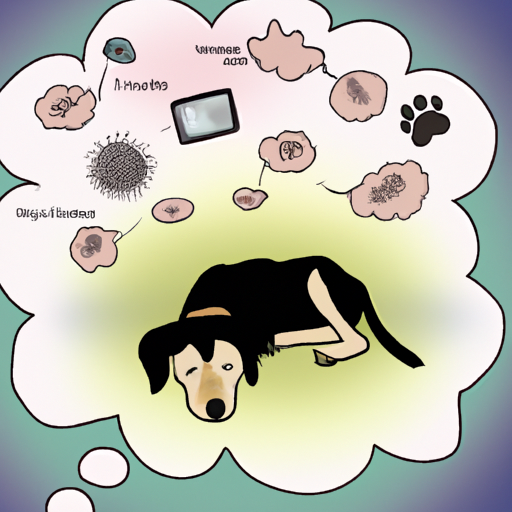If you’ve ever watched your canine companion snooze, you might have noticed them twitching their paws, flicking their ears, or even whimpering in their sleep. You may wonder, why do dogs twitch when sleeping? Is it a sign of distress or just a part of their dream world?
- Table of Contents
- Understanding Dog Sleep
- The Science Behind Sleeping Twitches
- Differentiating Between Normal Twitches and Distress Signals
-
Common Questions About Dog Twitching
-
Key Takeaways
- Dogs, like humans, go through different stages of sleep including REM sleep where dreams occur.
- Twitching during sleep is normal and often a sign that your dog is dreaming.
- Excessive twitching or signs of distress could indicate a health problem and should be addressed with a veterinarian.
Understanding Dog Sleep
Our furry friends share more with us than just our homes; they also share similar sleep cycles. Just like humans, dogs experience different stages of sleep, including the rapid eye movement (REM) stage, which is when dreaming occurs. PetMD explains that during REM sleep, your dog’s brain activity increases, which can lead to twitching and other movements.
However, dogs spend more time in REM sleep than humans do, which could account for the frequent twitching you might observe. This is a topic that’s thoroughly discussed in the article Understanding Your Dog’s Sleep Patterns on our website.
The Science Behind Sleeping Twitches
So, why do dogs twitch when they sleep? The answer lies in their neurology. During sleep, the brain sends signals to the body to inhibit movement, a mechanism called ‘sleep paralysis.’ However, this mechanism isn’t foolproof, especially during REM sleep.
When your dog enters REM sleep, these signals might not be as effective, allowing some of the dream-induced brain activity to translate into physical movements or twitches. This means that the twitching you see is likely your dog acting out their dreams!
Differentiating Between Normal Twitches and Distress Signals
While occasional twitching is normal and healthy, excessive twitching or other signs of distress could indicate a problem. Seizures, for example, can occur during sleep and may be mistaken for twitching.
Here are some signs that your dog’s twitching might be a cause for concern:
- Intensity: Normal twitching is typically mild and brief. If your dog’s whole body is shaking or the twitching lasts for an extended period, it might be a seizure.
- Consciousness: If your dog seems confused or disoriented after a twitching episode, it could be a seizure.
- Behavioral changes: Changes in behavior, appetite, or energy levels can indicate a health problem.
If you notice any of these signs, it’s important to seek veterinary care immediately. Learn more about recognizing and responding to dog seizures here.
Common Questions About Dog Twitching
1. Is it normal for dogs to twitch in their sleep?
Yes, it’s completely normal for dogs to twitch in their sleep. It’s often a sign that they’re dreaming.
2. Should I wake my dog if he’s twitching in his sleep?
In most cases, there’s no need to wake your dog. If the twitching is intense or your dog seems distressed, it’s best to gently wake them and consult a vet.
3. Can dogs have nightmares?
Just like humans, dogs can have bad dreams. If your dog seems distressed after waking, they might have had a nightmare. Offering comfort and reassurance can help.
Remember, watching over your dog’s sleep patterns and habits can be an important part of their care. As their caregiver, understanding the reason behind their sleep twitching can help ensure their wellbeing. For more insights, check out the article Caring for Your Dog’s Health on our site.



